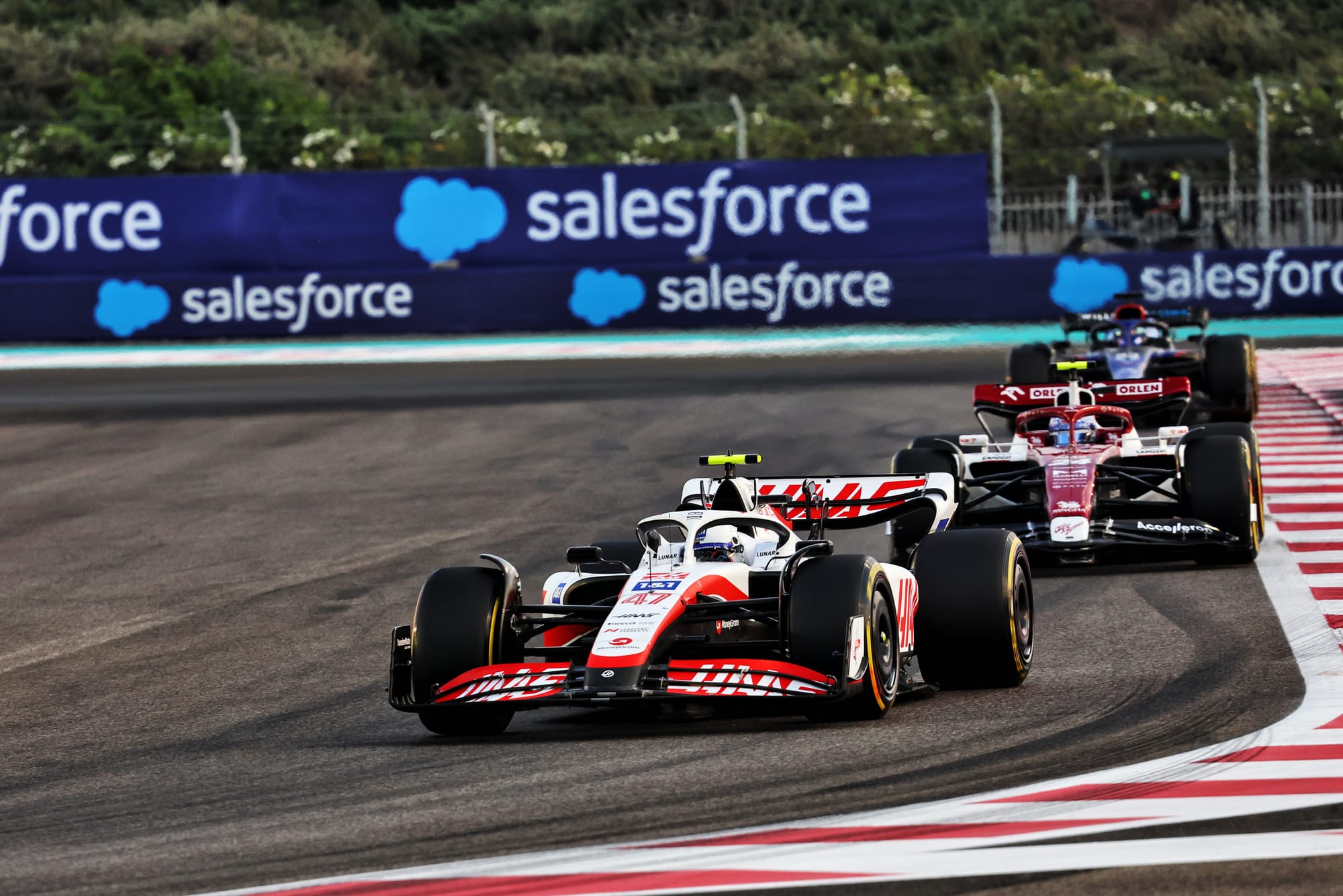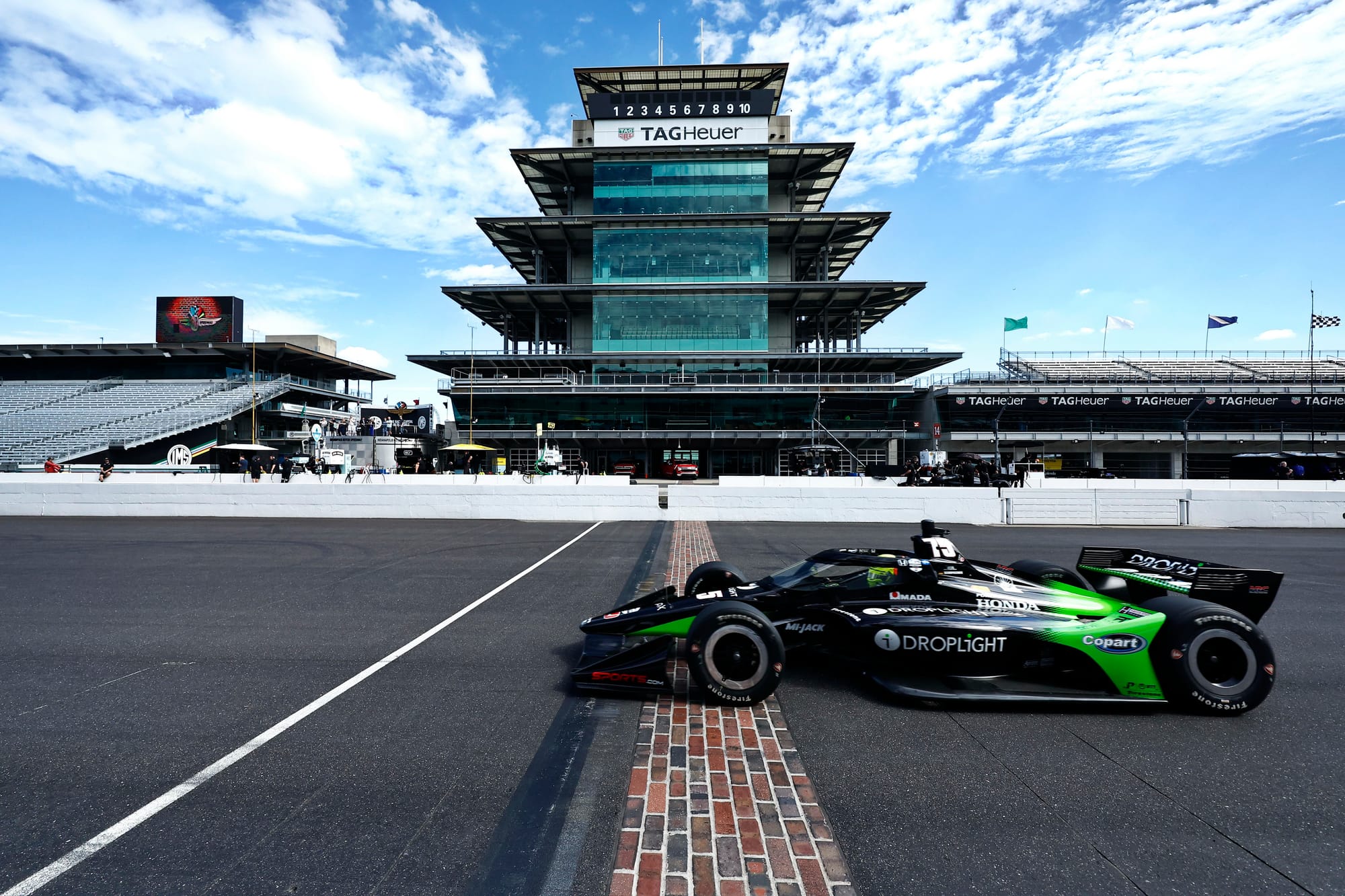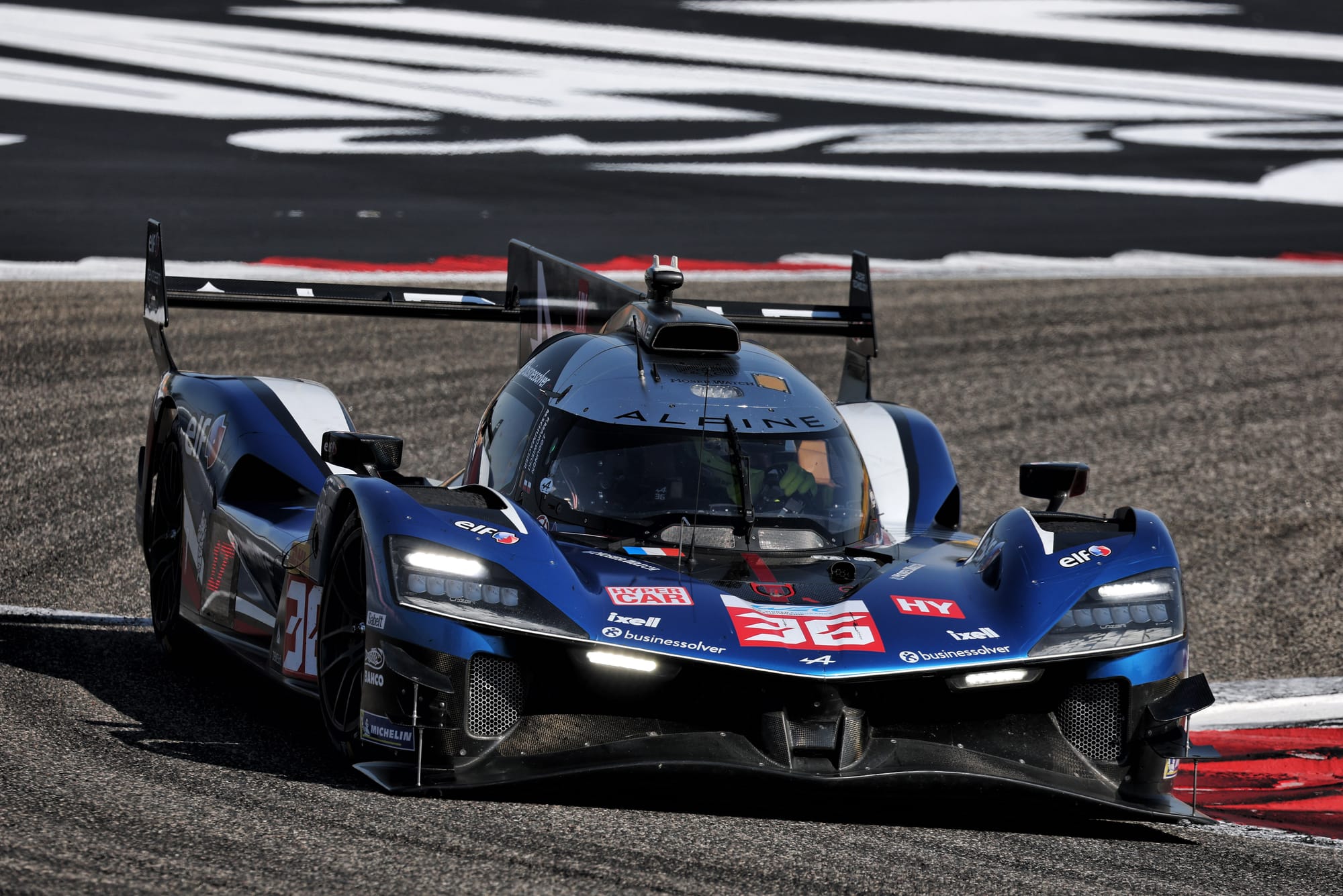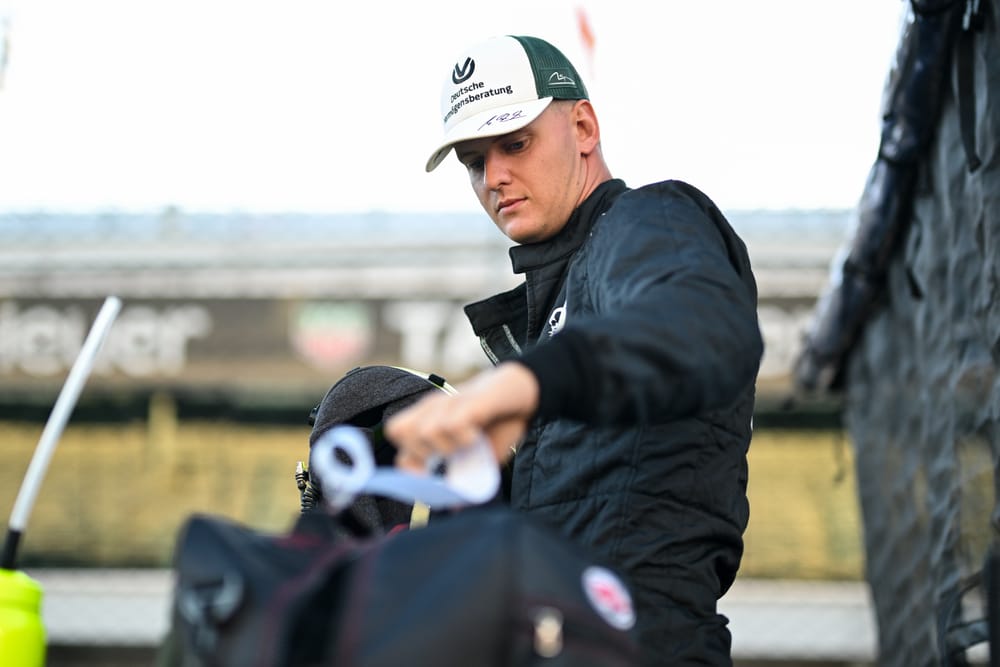Mick Schumacher will race in IndyCar in 2026, marking a return to full-time single-seater racing for the first time since he left Formula 1 in 2022.
Schumacher will race for the Rahal Letterman Lanigan team - co-owned by familiar names, IndyCar legend and sometime Jaguar F1 team boss Bobby Rahal, and famous talkshow host David Letterman - in a deal which will include racing on ovals for the first time.
What can we expect from Schumacher? And his team? What about how he left F1 and how can his sportscar stint be summarised? Here's everything you need to know.
Should he still be in F1?

Mick Schumacher's short-lived F1 stint fell between the cracks of an injustice and a deserved exit.
He didn't have enough of an opportunity (or do a bad enough job with what he had) to say there was no real career to be had there. Schumacher could have been a perfectly decent grand prix driver.
But he also didn't excel, or even hold his own consistently enough against a hot-and-cold Kevin Magnussen, to leave many thinking it was terribly unfair that he dropped off the grid.
That is just what can happen if a driver leaves an unconvincing impression. The fact neither Mercedes or Alpine never gave him another race seat chance despite seeing him up close means it wasn't just Haas that spurned him unfairly.
Still, had he been kept in F1, Schumacher would have merited the chance. His peaks were good, his work ethic was never questioned, and he himself was an interesting person (not just for who he was).
Maybe a different environment would have gotten more out of him - not because Haas didn't help, but it's well documented that Guenther Steiner's uncompromising approach was probably not what Mick specifically would have benefitted from.
That said, I always felt it was such a shame that there was a guard put up around him given who his father was and what happened to him - inevitable, perhaps, and understandable, but it was sometimes excessive.
As a result, people probably only got glimpses of a genuinely interesting, nice and engaging person - Mick was more than capable of handling himself, pushing back when he had to, and the way he was with smaller groups of media (and more familiar faces) was certainly more open than in other scenarios.
Hopefully, the IndyCar paddock becomes a safer and less invasive space for him to be his own person and show the driver he couldn't be often enough in F1. - Scott Mitchell-Malm
What to expect from Mick and his team

Like when Mick made the jump into the F1 paddock, there’s going to be so much attention on how he gets on that merely trying to stay realistic about his performances and results will be a challenge. But Schumacher is perfectly prepared, as he’s gone through all this before.
Expectations are going to be high from a fanbase which might not know the intricacies of his career so far. Fundamentally, very few ex-F1 drivers have made the switch to IndyCar properly in recent years and Marcus Ericsson’s patient but tangible rise, culminating in regular race wins and an Indianapolis 500 victory, is what Schumacher should be looking to emulate.
That starts with basically following ex-RLL driver Christian Lundgaard’s lead - making the switch from Europe, bedding in, challenging Graham Rahal to lead the team - as he’s a really strong benchmark, especially in race pace - and to grab some headline results that earns you a seat in a bigger team, McLaren in Lundgaard's case.
RLL could grow in a way it couldn’t while Lundgaard was there - more on that in a minute - so that Schumacher wouldn’t need to move to a bigger team as RLL can become that, it has the ingredients.
But as someone who reached F1, Schumacher's goal has to be 'IndyCar winner on a regular basis' and RLL needs to get back to that level for Schumacher to have that chance.
When I covered Mick in F2, he had more of a tendency for a neutral car, and the inherent oversteer you get from the current IndyCar might not be to his liking. But he’s definitely grown as a driver since then through F1 and sportscars.
And because in IndyCar, drivers have more power to diversify set-up direction than in many other series, he has every chance of finding a good compromise to deliver his best performances.
A lack of testing might be a struggle, and ovals are totally new to him, in a team which has been awful on them in recent seasons.
This might work in Schumacher’s favour as there will be zero expectations on his oval outings, but it could also work to stunt his growth as well - some would argue that's what's happened to Lundgaard - so it’s a fine balance and a lot depends on how the team’s car is in 2026.
As for the team, it hasn’t won more than one race in a season since 2019 with Takuma Sato. That year and the following year, it had two cars in the top 10 in the drivers' standings, but hasn’t done that since and only managed to put one car in the top 10 in 2021 and 2023.
Rookie Louis Foster provided a pole and some qualifying excitement last season, but years of struggling to sign and keep top personnel in place has hurt the team in comparison to its rivals in terms of the race results it needs to deliver.
Its core engineering group was and is always strong, but there’s not enough of them and too many ins and outs over the last few years while the opposition has been exponentially increasing the size of their technical teams.
It looks like it has started to address this. Last year it signed the ex-IndyCar president Jay Frye as its team president, and now it’s brought in one of the best engineering minds in the championship, Gavin Ward, in an unspecified role that basically looks like it will be 'roam around and fix/improve things'.
Ward was a race engineer in F1 for Red Bull, trained as an aerodynamicist under Adrian Newey and won the IndyCar championship at his first attempt with Josef Newgarden in 2019 before switching to McLaren and becoming its team boss.
Since being moved aside by McLaren prior to the 2025 season, he has been on the sidelines - until now. There were no shortage of suitors.
Brian Barnhart, also an ex-boss of IndyCar, has also joined as senior VP of operations, and Kyle Sagan, pit stop manager, both of whom have moved from McLaren.
More suspected good news for the RLL IndyCar team is that the IMSA side of RLL has lost its deal with BMW, and while it has signed a new one with McLaren, the latter is a GT deal as opposed to the hypercar BMW partnership now being taken over by WRT, BMW's World Endurance Championship team.
That means RLL can re-allocate a small number of staff from the IMSA programme back to IndyCar. It’s quite often had to rotate staff between the two programmes. There's no doubting what RLL's leading programme is in 2026 and that's IndyCar.
All of these things are unlikely to add up to RLL being a race and championship-winning outfit immediately. But it does lay the foundations, and who knows? There’s a chance things come together quickly for this team given the quality its adding.
Mick might be a rookie, but he's definitely upgraded this RLL line-up significantly, arguably to the best it has been since the team expanded back to three cars for 2022. - Jack Benyon
How good was Schumacher in WEC?

Schumacher was officially confirmed as an Alpine WEC driver on November 22, 2023.
And it didn’t take long for him to prove that a year away from racing hadn’t dulled his talent. Frequently entrusted with qualifying duties and late-race stints, he had every ingredient to build a career in endurance racing, especially within an Alpine squad that consistently rolled out the red carpet for him and did everything possible to enable it to stand out.
“He’s used to relying on a self-centred environment whose sole purpose is to make him shine,” team principal Philippe Sinault told The Race a few months ago.
“But in endurance racing, you’re not always running with an empty fuel tank and fresh tyres. It’s a bit like asking Usain Bolt to run a 4x100m relay.”
“We immediately noticed his high standards, both in and out of the car,” Sinault added. “His expectations were very high and he pushed everybody to reach that level. The only doubt we had concerned his team spirit, his collective mindset – but those quickly disappeared.”
Schumacher adapted quickly to the specific demands of the discipline, but he clearly never enjoyed it as much as single-seaters. He struggled with the constant compromises required, and with sharing his workspace with two other drivers.
That didn’t stop him from shining on multiple occasions, though. Blisteringly quick, he was responsible for three of the A424’s four podiums: at last year’s Fuji 6 Hours, then this season at Imola and Spa. Raw speed was part of it, but so were a handful of genuinely top-class overtakes.
Alpine did everything it could, right up to the final moments, to try to keep him. Had he not found an agreement with RLL in IndyCar, Schumacher would likely have headed either to Cadillac Team Jota or McLaren United AS, both of which had identified him as their number-one target.
But the pull of single-seaters proved stronger than even those very tempting offers… - Thibaut Villemant



